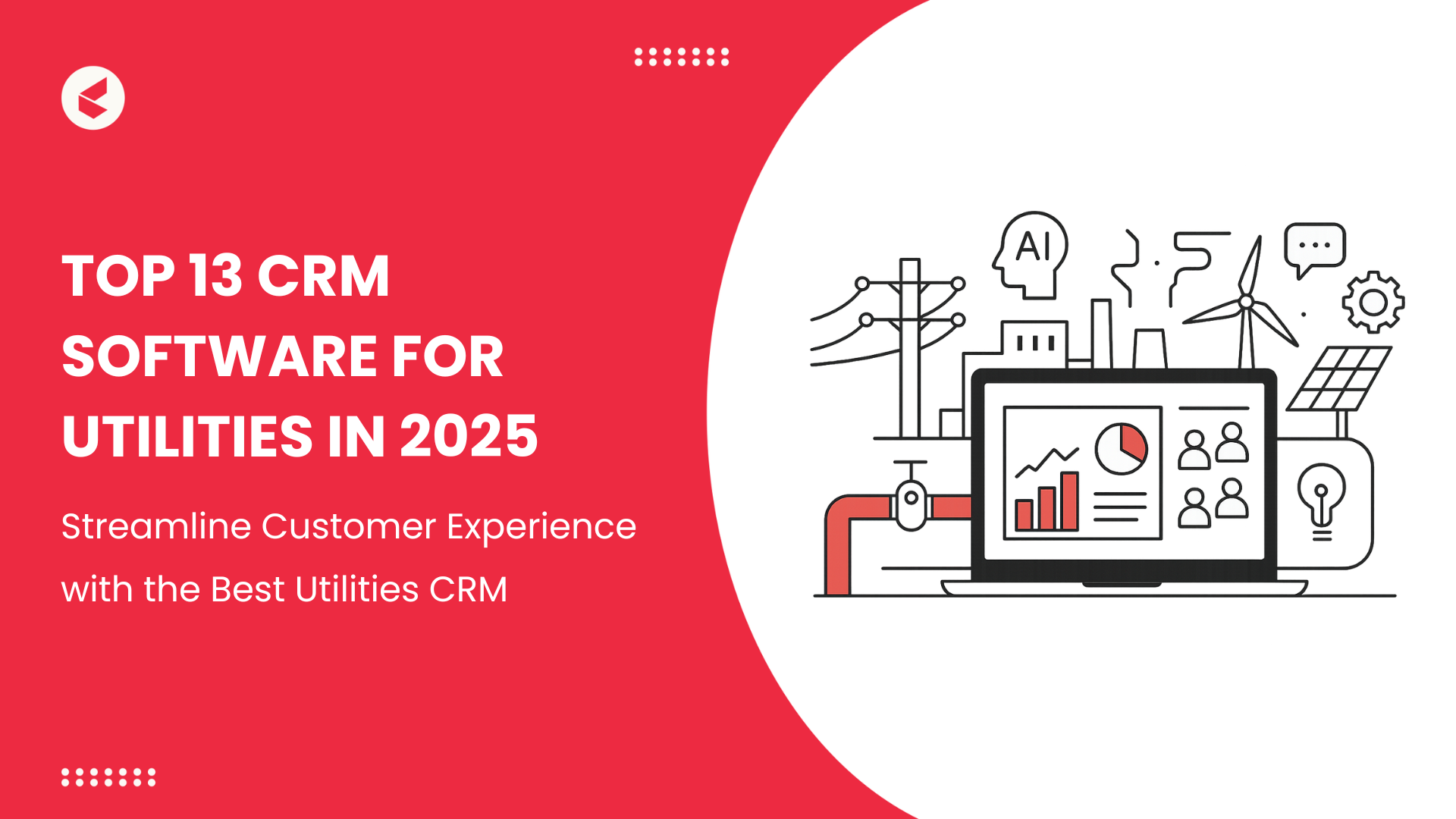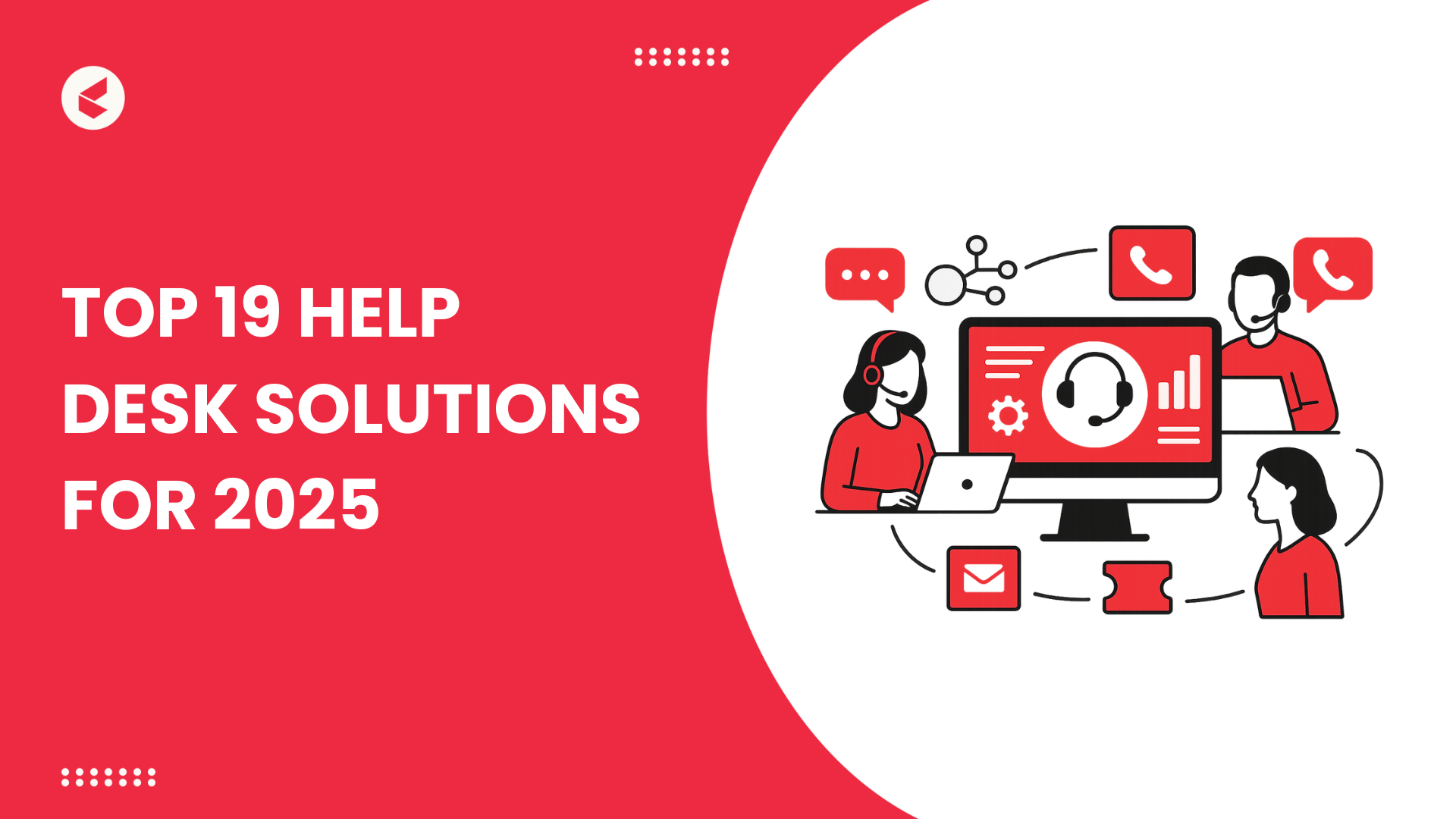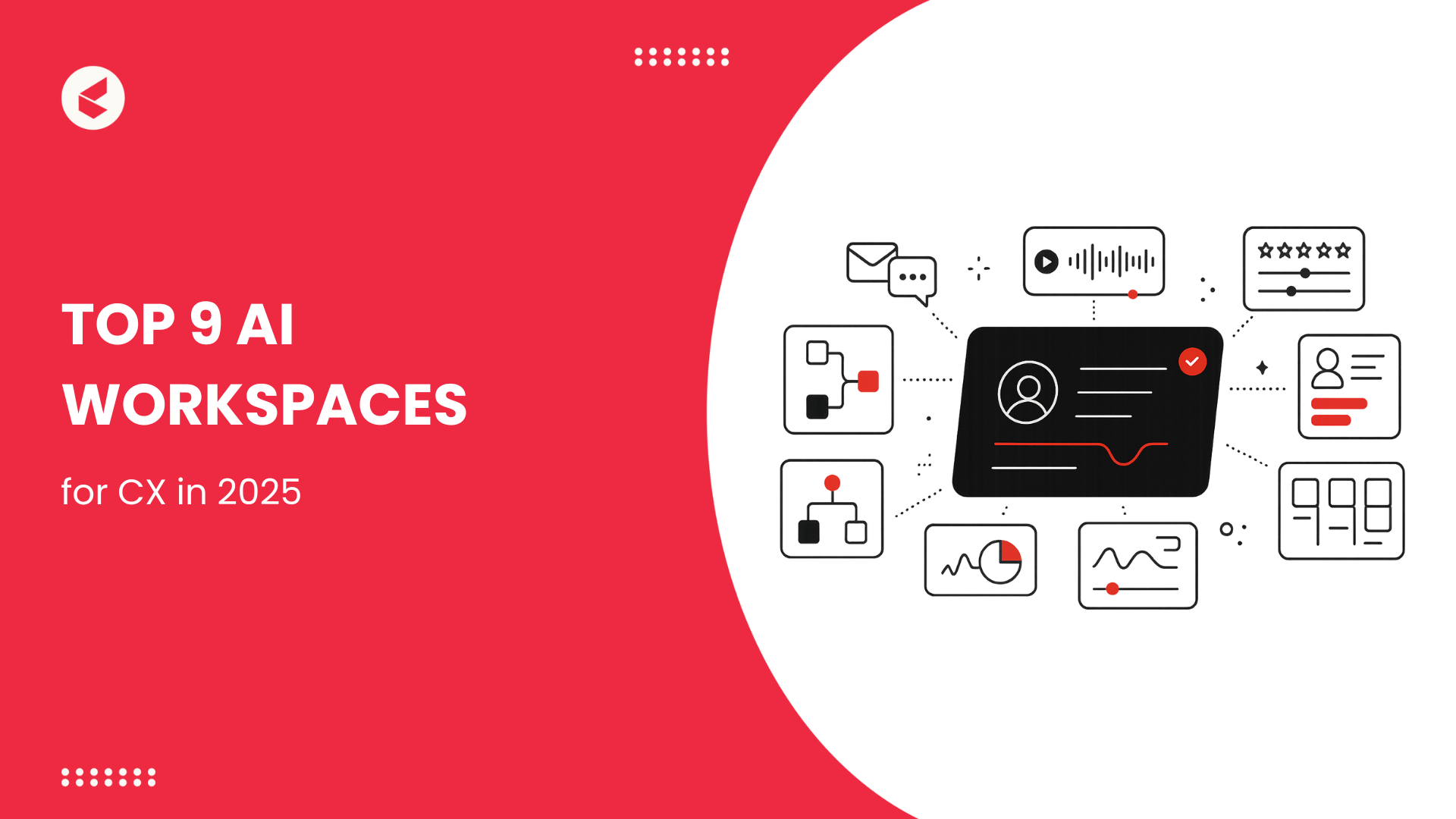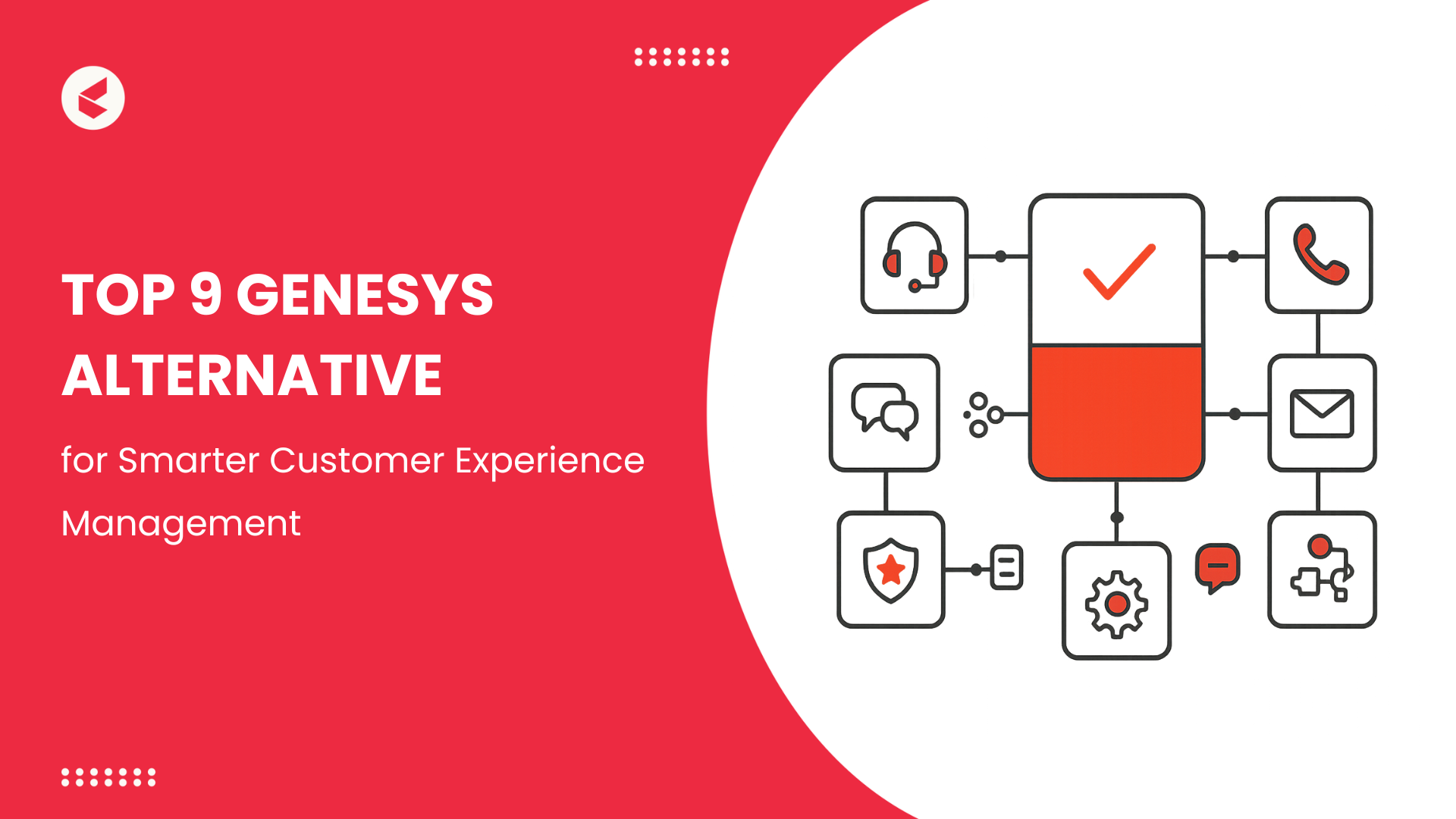Utility companies are under mounting pressure to deliver modern, responsive customer service. At the same time, they struggle with managing aging infrastructure and savvy consumers.
In fact, research from J.D. Power shows that only 16% of utility customers rate their digital experience to be valuable. That’s well behind other industries. The same study also highlights how only 68% of US utility websites and mobile apps meet basic functionality standards.
That means that one-third of digital experiences fail customers at a very fundamental level. That’s concerning.
In such a context, utilities need a purpose-built CRM software to meet rising expectations. One that unifies billing, field service, customer support, and digital engagement into a single view.
In this blog, we highlight the top 13 utilities CRM platforms for 2025. We evaluate their features and use cases to help utility firms pick the right solution.
How Modern CRM Solves Key Challenges Troubling Utility Companies
Utility companies juggle critical infrastructure, large customer bases, and ever-rising service expectations. Without a modern CRM for utilities, they risk falling behind. The table below highlights key problems and how a modern utilities CRM addresses them.
| Problem | What it Is | How a Modern CRM Solves It |
| Fragmented customer view | Billing, metering, field service, and support often live in separate systems. Agents work with incomplete context, causing redundant touches and inconsistent interactions. | A utilities CRM unifies data sources to offer a 360-degree customer view. Such consolidation allows agents to access billing, usage, service history and support requests. |
| Slow response during outages or service events | Customers expect proactive communication during disruptions, but legacy tools lack coordination between field teams and customer communication. | Modern CRM triggers automatic alerts, manages workflows across field-service and customer support, and provides real-time updates to customers and agents. |
| Low digital engagement and poor self-service adoption | Utilities still struggle to deliver mobile apps, intuitive portals, or proactive digital experiences. The J.D. Power study found that only 33% of utility websites/apps deliver evolved digital experiences. | A utilities-focused CRM offers self-service portals, usage dashboards, mobile-ready interfaces, and integrates with chat/chatbots to reduce call volume. |
| Inability to offer new services or monetize beyond commodity billing | EV charging, and smart home integrations, utilities need to move beyond meter-reading. Systems focused only on billing struggle to support service sales, bundles, or subscriptions. | A modern CRM supports product catalogs, service bundles, segmentation, and campaign workflows, enabling utilities to upsell/cross-sell and deepen customer relationships. |
Quick Comparison – Top CRM Software for Utilities at a Glance
Here’s a brief overview of the 13 CRM utilities tools that we’ll explore in depth.
| Tool Name | G2 rating | Feature Highlight | Best For | Trial Available | Starting Price |
| Kapture CX | 4.6/5 | Real-time sentiment detection with workflow triggers | Utilities needing unified support and field service | N/A | Available on request |
| Salesforce | 4.4/5 | AI-driven utility cloud with omnichannel engagement | Large utilities modernizing legacy stacks | Yes (30 days) | USD $25 per user per month |
| monday CRM | 4.6/5 | Visual boards with utility-specific automation | Small to mid-sized utilities needing fast setup | Yes | USD $15 per user per month |
| Oracle Siebel | 3.5/5 | Deep integration with utility billing & ERP | Regulated utilities requiring enterprise control | N/A | Base licensing at $3,750 per user |
| HubSpot CRM | 4.4/5 | Customer engagement & automation in one platform | Growth utilities launching digital initiatives | Yes (Free tier) | USD $20 per user per month |
| Apptivo | 4.4/5 | Modular CRM with asset & field tracking | Mid-sized utilities looking for cost-effective CRM | Yes (14 days) | USD $20 per user per month |
| ClickUp | 4.7/5 | Flexible service/work management built for utilities | Utilities that combine project, service & CRM work | Yes (Free tier) | USD $10 per user per month |
| BE-terna | N/A | Microsoft Dynamics-based, energy-supplier workflows | Energy suppliers & utilities needing vertical fit | N/A | Available on request |
| EDAMS | N/A | Unified billing and CRM for service companies | Municipal utility providers needing a full stack | N/A | Available on request |
| Sage CRM | 3.8/5 | Service-billing-financial alignment for utilities | Utilities using Sage financial systems | N/A | Available on request |
| Pipeliner CRM | 4.6/5 | Sales & service pipeline visualization | Utilities expanding into renewables/services | Yes (14 days) | USD $65 per user per month |
| Itineris | N/A | Meter-to-cash CRM built for utilities | Utilities needing end-to-end customer servicing | N/A | Available on request |
| Praxedo | 4.4/5 | Field-service dispatch and customer updates in CRMs | Utilities with heavy field service needs | N/A | USD $39 per user per month |
Top 13 CRM Software for Utilities
Utility providers today manage complex service requests, regulatory compliance, and high customer expectations. The right CRM software for utilities unifies these processes, making service delivery faster, smarter, and more human.
Below are the 13 best utilities CRM solutions that help teams streamline operations and elevate CX.
1. Kapture CX – AI-First CRM Software for Unified CX and Field Coordination
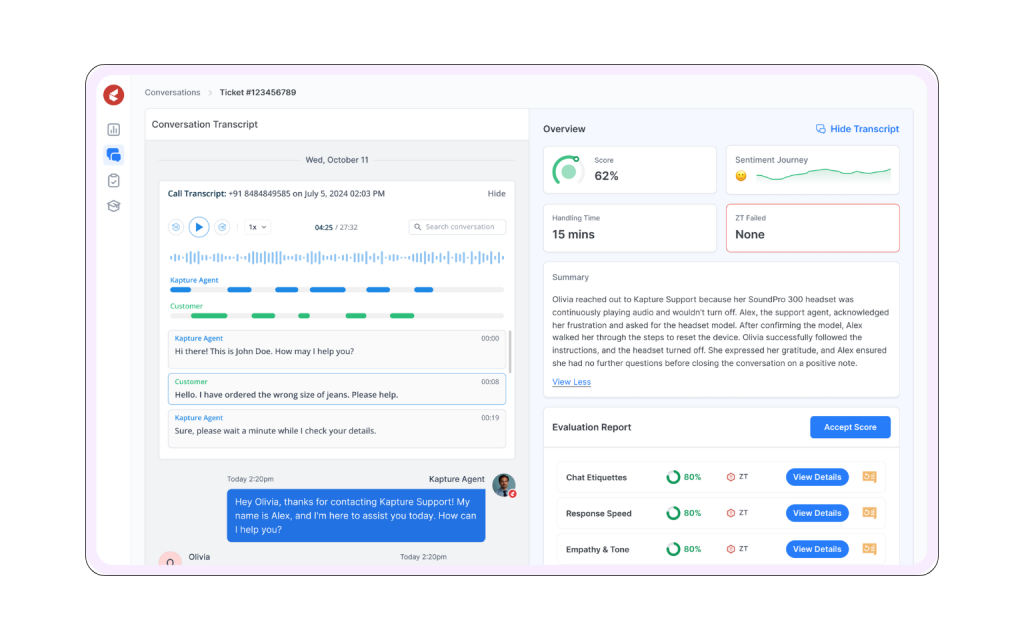
Kapture CX centralizes support, billing, field service, and outage communication into a single utilities CRM, helping agents resolve issues fast and stay context-aware across channels.
Built with AI agents and real-time triggers, it automates survey prompts, routes service requests, and summarizes customer sentiment so teams act quickly on feedback. This reduces repeat contacts and improves CSAT in high-volume utility environments.
Kapture CX Best Features
- Automate ticket creation and routing from omnichannel input
- Surface sentiment and themes with AI summarization
- Trigger outage alerts and customer notifications automatically
- Unify billing, support, and field data in one dashboard
Best Use Case
Best for utilities seeking an integrated CRM software for utilities that ties customer feedback to operational action.
Standout CX Capability
It turns survey responses and service events into immediate, actionable work items for agents and field teams.
2. Salesforce – Scalable Energy and Utilities CRM for Proactive CX

Salesforce Energy and Utilities Cloud extends Salesforce CRM with prebuilt apps for meter-to-cash, customer service, and field operations.
It unifies customer records, supports outage coordination, and uses AI to predict issues, enabling utilities to deliver proactive communications and personalized service at scale. As a utilities CRM, it’s strong where deep integrations and enterprise workflows matter.
Salesforce Best Features
- Connect CRM records with CIS/billing via APIs and MuleSoft
- Automate service workflows and personalized outreach
- Forecast churn or service risk with Einstein AI
- Deliver omnichannel support and mobile field apps
Best Use Case
Best for large US utilities modernizing legacy systems and centralizing customer experience on one platform.
Standout CX Capability
It scales proactive, data-driven engagement across customers, field crews, and back-office operations.
3. monday CRM – Visual CRM for Collaborative Utility Workflows
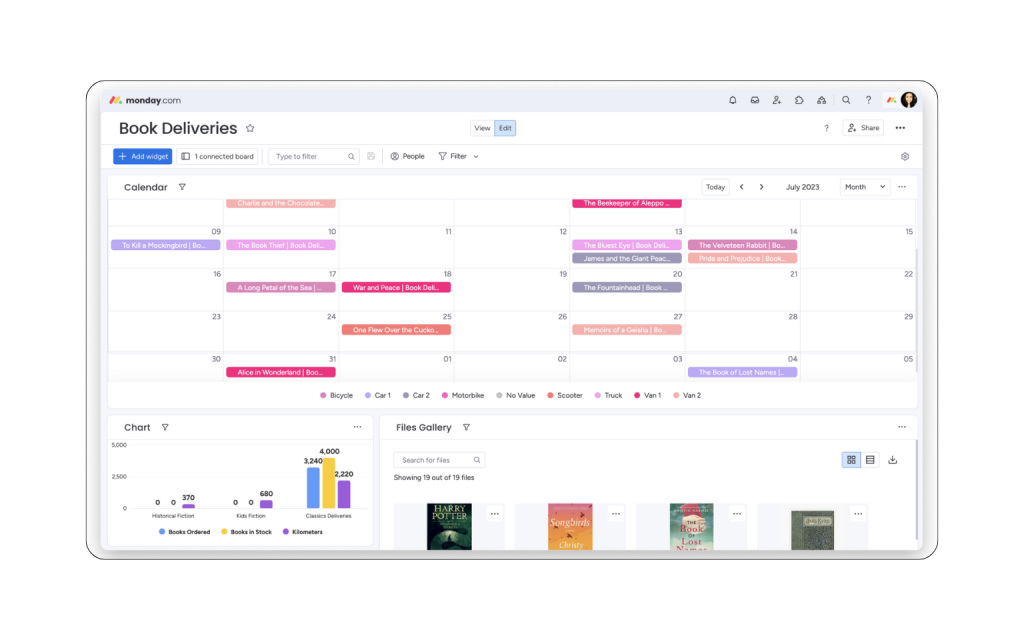
monday CRM provides visual boards, prebuilt utilities templates, and workflow automation that map easily to service requests, outage tracking, and customer success use cases.
For utilities moving from spreadsheets to a simple utilities CRM, monday’s interface speeds team alignment, offers templates for utilities processes, and supports automation for follow-ups.
monday CRM Best Features
- Visualize cases and work orders with drag-and-drop boards
- Automate ticket routing and follow-ups with custom automations
- Deploy utilities CRM templates for customer success and outages
- Integrate with communication tools to centralize updates
Best Use Case
Best for small to mid-sized utilities needing easy, collaborative CRM workflows and fast deployment.
Standout CX Capability
It simplifies cross-team collaboration so customers get faster, more consistent responses.
4. Oracle Siebel – Enterprise-Grade CRM with Robust Integration for Utilities
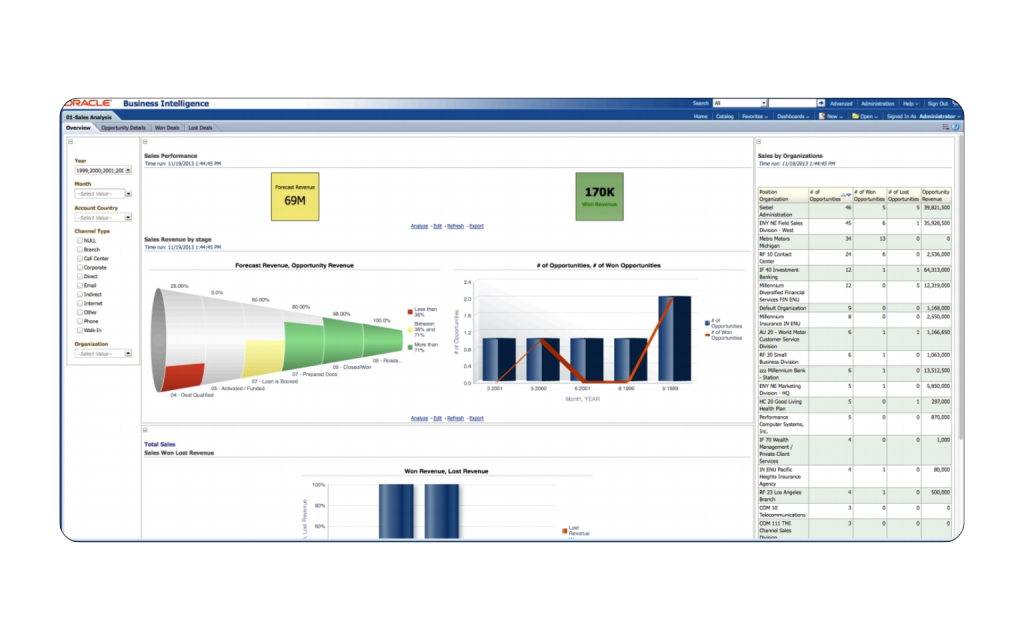
Oracle Siebel CRM offers enterprise-grade customer management for utilities that need deep integration with billing, CIS, and operational systems.
Its utilities-focused CX solutions support lifecycle management, outage communications, and regulatory workflows, delivering resilience and control for complex, regulated utilities. Siebel’s strength is stability and integration in large utility stacks.
Oracle Siebel Best Features
- Integrate tightly with Oracle Utilities and CIS systems
- Automate customer lifecycle workflows and regulatory reporting
- Enable omnichannel service with enterprise security
- Support large-scale personalization and SLA management
Best Use Case
Best for large, regulated utilities that require deep systems integration and enterprise control.
Standout CX Capability
It ensures consistent, compliant CX at scale through robust system integration.
5. HubSpot CRM – Flexible CRM for Customer Engagement and Automation in Utilities

HubSpot CRM offers an accessible platform for utilities to manage customer interactions, automate follow-ups, and capture feedback across digital touchpoints.
HubSpot’s workflows, form capture, and ticketing integrate well with billing systems and enable utilities to run outreach, track satisfaction, and build self-service journeys.
It’s a practical utilities CRM option for teams focused on engagement and marketing-driven service.
HubSpot CRM Best Features
- Automate outreach and ticketing with intuitive workflows
- Capture feedback via forms, chat, and email integrated into records
- Track customer journeys and campaign impact with dashboards
- Sync data with billing or CIS through integrations
Best Use Case
Best for utilities seeking a simple, marketing-friendly CRM that accelerates digital engagement and self-service.
Standout CX Capability
It helps utilities create personalized, timely customer communications that drive adoption of digital services.
6. Apptivo – Modular CRM for Cost-Effective Utility Operations
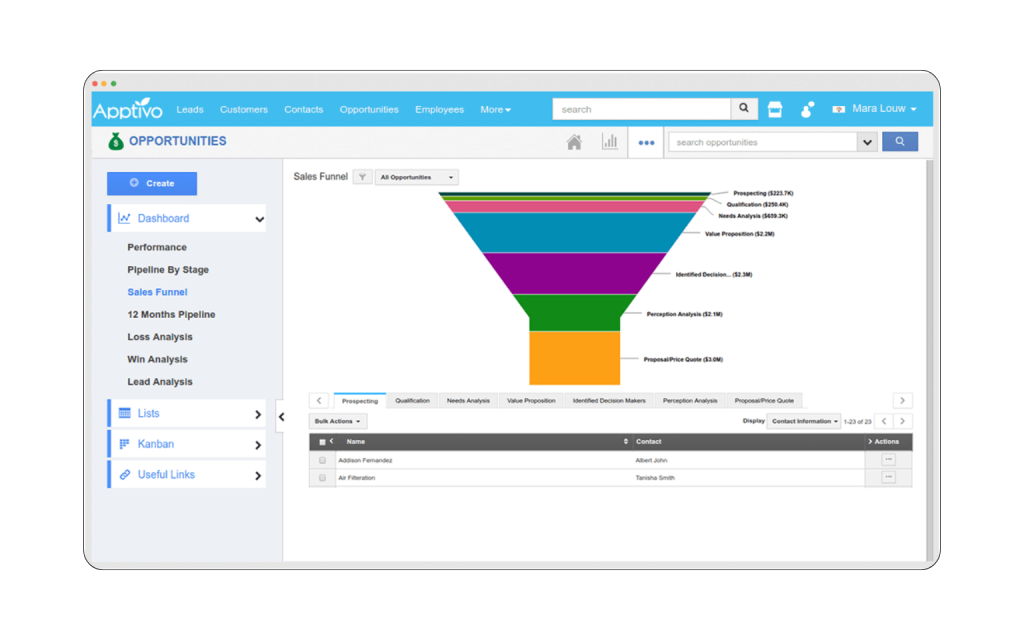
Apptivo offers modular CRM and project workflows to handle work orders, installations, and service requests. This makes it useful for utilities that need a low-cost utilities CRM to manage field ops, billing follow-ups, and customer accounts.
Its codeless customization, mobile access, and asset management features make it practical for smaller utilities or co-ops.
Apptivo Best Features
- Customize workflows and fields with no code
- Manage work orders, assets, and field schedules
- Automate reminders for payments and renewals
- Provide mobile CRM access for field teams
Best Use Case
Best for smaller utilities or cooperatives looking for affordable, customizable CRM functionality.
Standout CX Capability
It brings order and transparency to field and billing interactions without heavy implementation costs.
7. ClickUp – All-in-One CRM Hub for Utilities and Service Teams
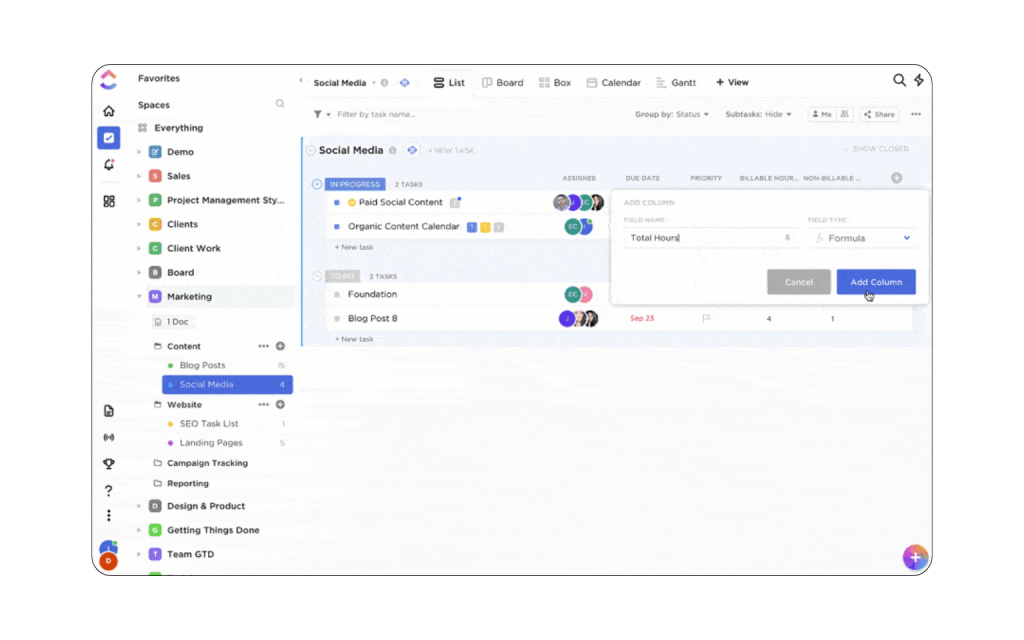
ClickUp’s CRM solution accommodates utility firms by combining account tracking, service workflows, and customer engagement in one platform. Its Utility Professionals CRM Template supports custom fields, visual views, and task automation specifically for service-centric operations.
In a utilities context, teams can manage customer meters, field requests, and billing issues on the same platform that tracks work orders and support tickets.
ClickUp Best Features
- Configure custom views to track service requests, meter issues, and account status
- Automate recurring workflows, such as meter read reminders or incident escalation
- Integrate with billing, chat, or project tools for unified service operations
- Use dashboard widgets to monitor KPIs like customer response time and field-crew productivity
Best Use Case
Best for utility companies that need a flexible CRM software for utilities, combining service, project, and customer operations in one tool.
Standout CX Capability
It aligns customer service and operations workflows, ensuring utility customers get faster, coordinated responses.
8. BE-terna – Industry-Tailored CRM for Utilities and Energy Providers
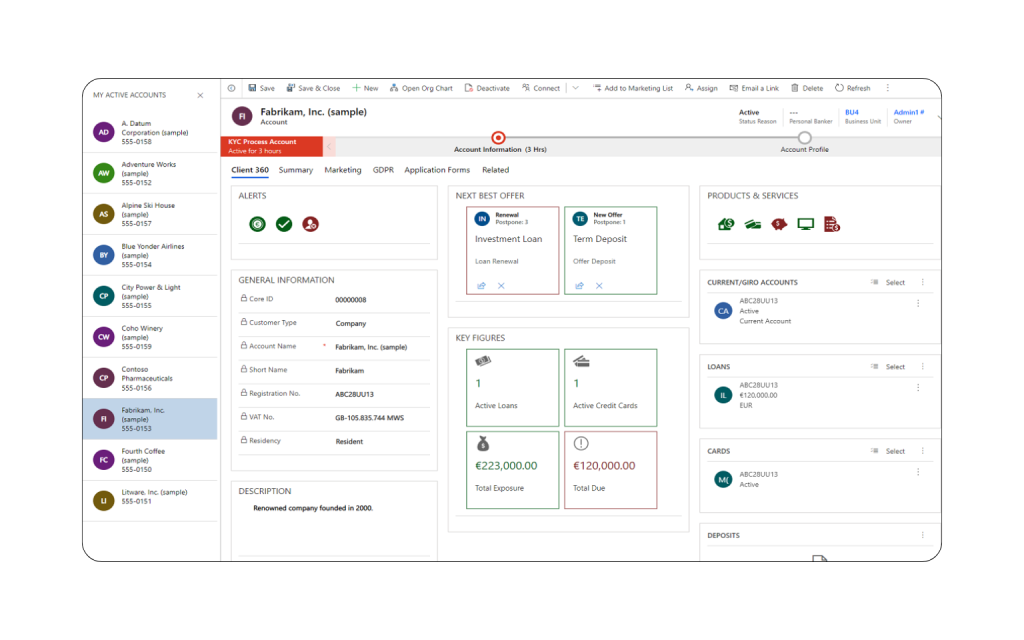
BE-terna’s solution, built on Microsoft Dynamics 365, offers a dedicated utilities CRM that supports contract changes, meter readings, tariff adjustments, and AI-driven chatbots—all within one service platform. It is designed to serve energy suppliers and utilities wanting to deliver modern CX through specialized vertical workflows.
BE-terna Best Features
- Manage customer contracts, relocations, and special tariffs within one workflow
- Automate service requests, relocations, and cancellations for improved speed
- Use chatbots and Agentic AI for 24/7 support and self-service
- Connect CRM with ERP/ billing systems for unified customer data
Best Use Case
Best for utilities and energy suppliers seeking a purpose-built CRM for utilities with strong integration and service automation.
Standout CX Capability
It anticipates service needs and provides personalized, timely interactions based on real utility workflows.
9. EDAMS – Billing and CRM Platform for Utility Service Providers
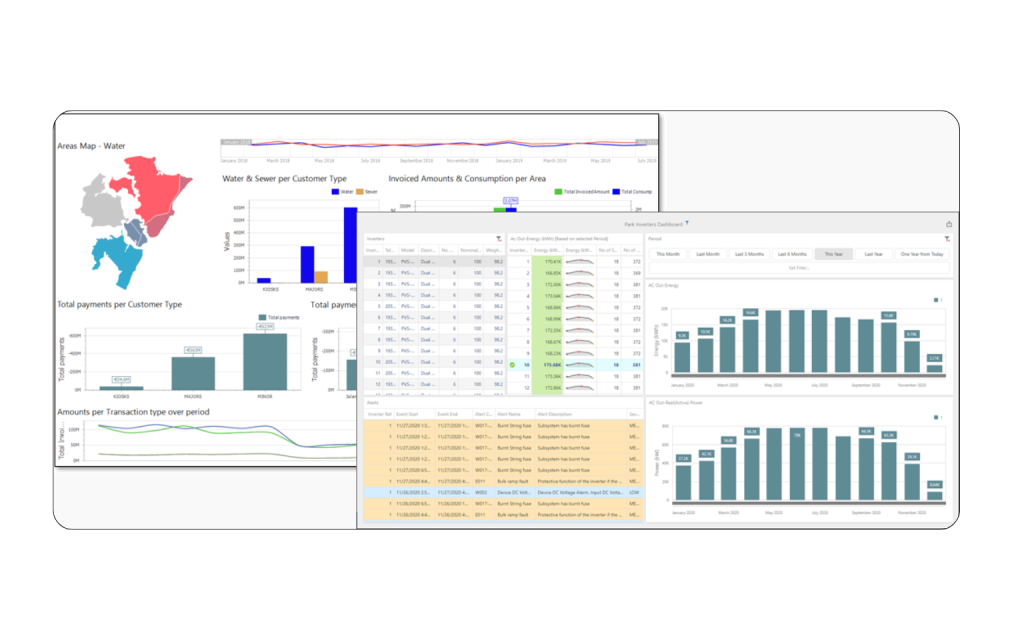
EDAMS Billing and CRM is engineered specifically for utility companies and municipalities, combining meter management, debt collection, revenue management, and customer services in one system. As a utilities CRM, it ensures service teams have visibility into customer accounts, usage, billing history, and support interactions.
EDAMS Best Features
- Consolidate billing, meter readings, debt management, and customer records
- Automate workflows for service orders, payments, and metering exceptions
- Provide self-service portals and account access for utility customers
- Generate reporting on customer lifecycle and commercial planning
Best Use Case
Best for municipal utilities and service providers needing an integrated CRM software for utilities that covers billing and customer service in one.
Standout CX Capability
It ensures customers see unified account, usage, and service data, reducing confusion and improving transparency.
10. Sage CRM – Financially-Aligned CRM for Utility Billing and Operations
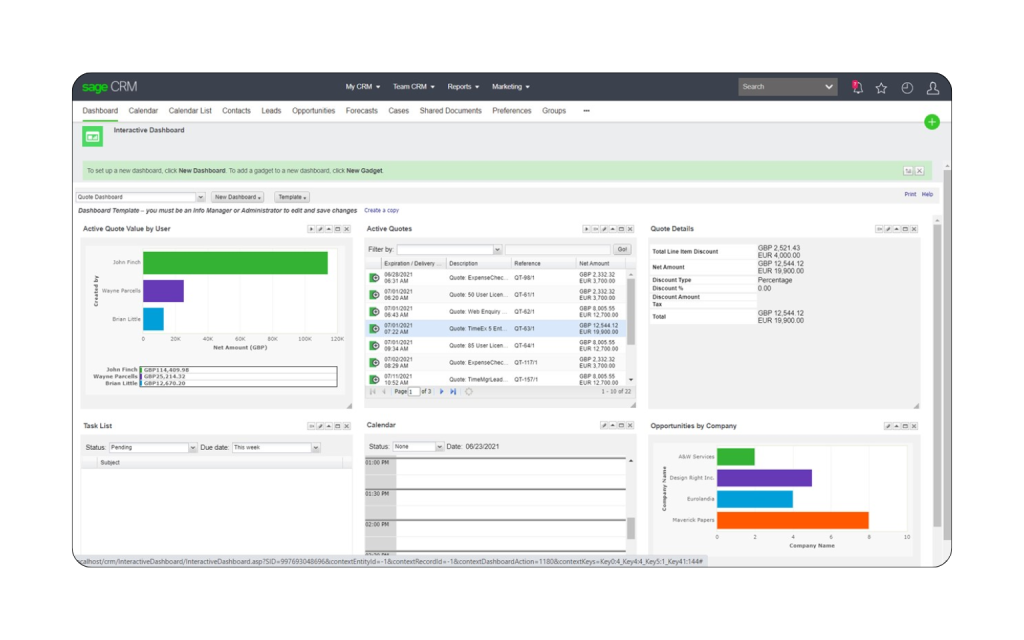
While Sage CRM is a general platform, you can easily convert it into a utilities CRM. To achieve this, integrate with Sage Intacct or CUSI utility billing systems for combined customer, financial, and operational insights. This serves utility firms needing simplicity, compliance, and integrated service-billing workflows.
Sage CRM Best Features
- Sync customer service and usage data with financial accounting and billing
- Automate workflows across tickets, billing, and regulatory reporting
- Provide dashboards for customer satisfaction, cost-to-serve, and service outcomes
- Allow configuration and customization for service activities, equipment tracking, or regulatory fields
Best Use Case
Best for utilities that already use Sage financial systems and want a CRM software for utilities with tight service-billing alignment.
Standout CX Capability
It connects operational service interactions with billing and financial clarity, offering customers transparency and consistency.
11. Pipeliner CRM – Dynamic CRM for Sales and Service Clarity in Utilities
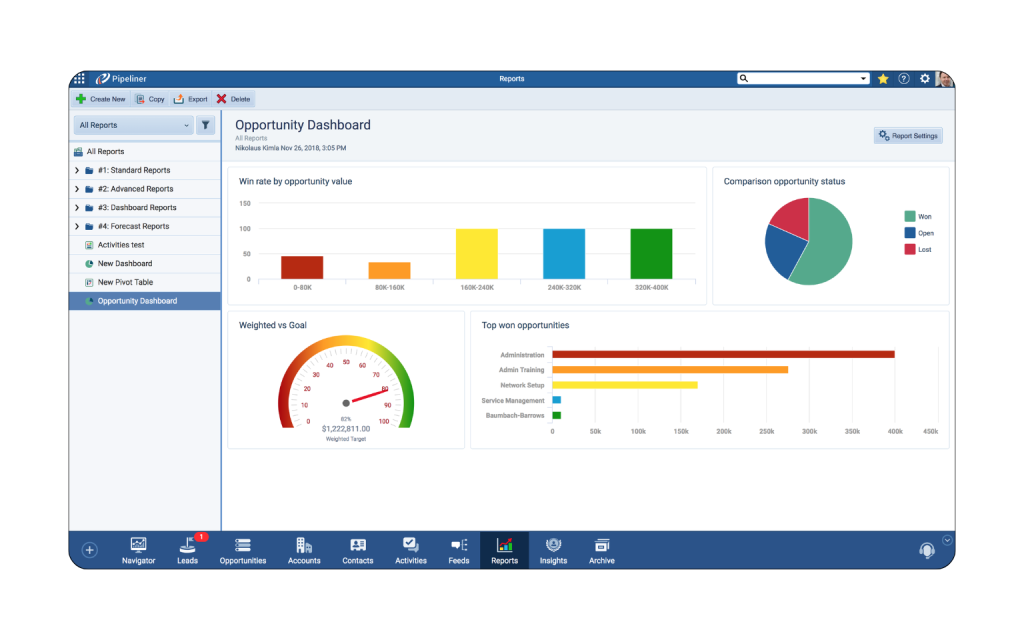
Pipeliner CRM offers strong workflow visualization, asset-tracking, and integration capabilities, which utilities can leverage for service-sales alignment.
It’s crucial when utilities expand into renewables, EV charging, or value-added services. Although not strictly utilities-only, it suits firms adopting a utility-centric CRM approach to CX.
Pipeliner CRM Best Features
- Visual sales and service pipelines to track product adoption and service interactions
- Integrate custom entities for utility assets, contracts, and service calls
- Automate follow-up tasks and service-sales hand-offs
- Connect with external systems to provide service history to field teams
Best Use Case
Best for utilities expanding into new services (e.g., EV, solar) needing a CRM software for utilities that blends sales and service.
Standout CX Capability
It helps utilities deliver consistent, proactive service by linking new offers, service engagements, and customer interactions.
12. UMAX by Itineris – Utility-Focused CRM and CIS Platform for Meter-to-Cash CX

Itineris delivers UMAX, a configurable CIS and CRM solution built for utilities and water networks in North America and beyond. Its utilities CRM capabilities support customer service, metering, fieldwork, and outage response, ensuring CX teams have full context from meter to cash.
Itineris Best Features
- Manage customer, asset, and field service workflows within a unified utilities CRM
- Leverage configurable modules for billing, outage notifications, and service calls
- Enable service agents to access the full customer journey from usage to field resolution
- Support the expansion of digital channels and self-service for utility customers
Best Use Case
Best for large utility companies needing end-to-end CRM software for utilities built specifically for meter-to-cash and field workflows.
Standout CX Capability
The combination of service operations and customer engagement makes every touchpoint informed, seamless, and customer-centric.
13. Praxedo – Field-First CRM Connecting Service Teams to Customer Experience

Praxedo is a field service management (FSM) tool for energy and water utilities. This makes it a great fit for a utilities CRM strategy for service dispatch, technician tracking, and customer updates. It provides real-time service intelligence and enhances customer experience across field operations.
Praxedo Best Features
- Schedule and dispatch field crews with real-time updates to/from customers
- Provide mobile apps for technicians to submit job status, photos, and updates
- Integrate job outcomes into customer profiles for service visibility
- Improve response time and customer communication through analytics and alerts.
Best Use Case
Best for utilities heavily reliant on field service operations and seeking a CRM software for utilities that enhances customer updates and resolution tracking.
Standout CX Capability
It ensures field work and customer communication work in tandem. This way, customers aren’t left guessing about service status.
How to Choose the Right CRM Software for Utilities
How do you know if the CRM software for utilities suits your use case? You need to look for specific features that take shape around utility-specific operations and service workflows. Here are some.
- Unified customer and service view – The CRM should combine billing, meter usage, support tickets, outage history, and field service into a single profile. This gives agents full context for every interaction
- Automated event-trigger workflows – Look for tools that automatically create notifications or tasks for outages, meter alerts, unusual consumption, or service requests. This reduces delays and manual effort
- Field service and mobile technician support – The CRM must let field crews receive assignments, update statuses, upload photos, and access mobile dashboards. This brings customers and agents on the same page
- Omnichannel customer engagement – Customers should be able to interact via their preferred mode of contact. This includes chat, email, SMS, self-service portals, or apps. Such an omnichannel presence captures and routes feedback efficiently
- Real-time insights and metrics – Choose tools that calculate CSAT/NPS scores, sentiment, and operational KPIs instantly. This allows your team to act instantly and proactively
- Regulatory and billing integration – The CRM should connect with billing or CIS systems. It must support audit trails and ensure compliance and billing accuracy
- Scalable and adaptable architecture – The CRM should grow with new services like smart meters, EV charging, or renewables. Additions should be easy without rebuilding workflows
Emerging Trends in Utilities CRM: CX-First Innovations
Utilities companies are expected to deliver seamless digital service, real-time updates, and personalized interactions. That shift is pushing CRM software for utilities into new territory. Below are key trends transforming the utilities space:
Trend 1 – Hyper-Personalization and Predictive Service
According to a 2025 Gitnux survey, six out of ten utility customers would switch providers for better service. The survey also highlighted how 83% consumers expect real-time updates during outages. What’s more is that 80% would pay for such a richer customer experience.
This puts hyper-personalization and predictive service back into the spotlight. Modern utilities CRM platforms are embedding AI to analyze consumption, detect anomalies, and deliver custom communications. For example, companies are suggesting rate plan changes or auto-alerting when usage spikes. The result: customers feel seen and served, not just billed.
Trend 2 – True Omnichannel Experience and Self-Service
Utility customers expect to interact via portal, app, SMS, email and to have these channels “follow” them seamlessly.
CRM for utilities is evolving to support self-service workflows: customers log in, check usage, pay, report issues, all without calling support. Service agents get unified views so they don’t have to ask customers to repeat themselves. That accelerates resolution and improves CX.
Trend 3 – Integration with Field and Smart-Grid Data
Utility companies need a unified ecosystem to run smart operations. This means that you’ll see more of IoT, smart meters, distributed energy resources (DERs), and sensors to collect field data. This should go onto CRMs for an integrated system.
Such integration enables alerts (e.g., consumption anomaly, service interruption), dispatch automation, and informed customer outreach. The customer sees knowledgeable support; the utility gains operational efficiency. A win-win for all.
Driving CX Excellence with the Right Utilities CRM
The right CRM software for utilities centralizes data and operations. It brings together billing, field service, customer data, and digital engagement, connecting agents, field crews, and customers for a richer CX.
For utility companies, choosing a solution built for service-centric workflows, real-time transparency, and seamless channels is essential to staying competitive.
If you’re ready to transform how you serve your customers and manage operations, Kapture CX offers an AI-first, utilities-specific CRM built for this moment. With industry workflows, omnichannel support, and real-time analytics, move from managing service to defining it.
Book a free demo with Kapture CX today and discover how to upgrade your CRM for utilities and deliver service that customers truly recognize.
FAQs
A utilities CRM centralizes data specific to the utilities industry. So, you see fields related to customer accounts, meter usage, billing, and field-service data. Unlike generic CRMs, it supports utility-specific workflows. This includes outage management, usage alerts, and service dispatch.
Yes. Many modern utilities CRM solutions offer modular or cloud-based deployment. Small utilities can start with core customer service features at first. Once they’re successful, you can scale field, analytics, or billing functions later.
Check for:
• CIS/billing integration
• Field-service management
• Omnichannel engagement
• Mobile access for crews
• Real-time analytics
• Regulatory compliance
Utilities CRM unifies usage, billing, and service data to create a single customer view. Customer service teams can resolve issues faster, notify customers proactively, and deliver personalized experiences. This leads to a richer CX.
Mobile access is critical for utilities CRM as it offers accessibility to the field crew. On-field employees can use mobile apps to update service requests, report outages, and view work orders. This ensures faster resolution and smarter customer interactions.
